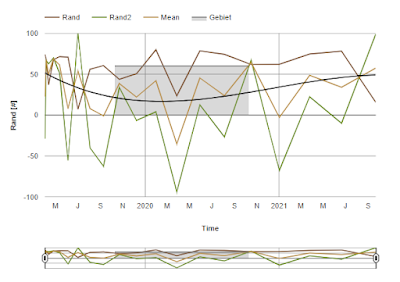Theremin: The electric musical instrument
General:
(German) A Theremin is an electric musical instrument, which is regulated by two resonant circuits. One resonant circuit is connected to an antenna. Through changing the distance between you and the antenna you change the frequency of the resonant circuit. At least you can hear the difference between both circuits.
 Composition:
Composition:
You need these components and the following circuit:- OPV TL071 x2
- LM386 x1
Capacitors:
- 100 nF x2
- 220 nF x2
- 47 pF x2
- 47 nF x1
- 100 pF x1
- 10 nF x1
- Elko 220 u x3
Resistors:
- 100 k x4
- 22 k x4
- 47 k x2
- 10 x1
Potientiometer
- 100k x1
- 10k x2
Others:
- Diode 1N4007 1
- BAT42 2
- Antenna
- Speaker
 To supply the Theremin with electricity ja can use two 9V-batteries in series. With power supplies you have to be careful because they have to be grounded with this plug. Left you see my composition at the stickboard additional with on-off-plug and speaker connection. Important is to use short wires to reduce the disturbance of the resonant circuit.
To supply the Theremin with electricity ja can use two 9V-batteries in series. With power supplies you have to be careful because they have to be grounded with this plug. Left you see my composition at the stickboard additional with on-off-plug and speaker connection. Important is to use short wires to reduce the disturbance of the resonant circuit.
As seen, the mount for the antenna is from the 3D-printer (STL-file).
As an antenna you can use technically each electric ladder.
 |
| Steckerkonstruktion als +-9V Quelle |
If you have a 3D-printer like my brother it's easy to print a box for your theremin like following;
Application:
The application is simply: the shorter the distance between you and the antenna is, the deeper is the sound and the frequency (exception in "analyse"). If you move your other hand over the circuit the frequency changes too because it's very sensitiv. It use is to widen the range of the frequency. Normally the Theremin is about one octave but with the second hand you can expand it to 2-3 octaves.
The nearer you hand to the antenna is, the deeper is the sound but if you touch the antenna, the sound is interrupted. If you wear gloves, you can touch it without interrupt it. Because of the 1/r manner, where r is the distance, the frequency changes sensitivly at short distance.
Here a short sample "Over the rainbow":
Analyse:
Due to the fact that I am physicist, I'm interessted in the changing of the frequency if you change the resistance. In the area R = 0.10 kOhm the sound gets higher the higher the resistor is. The further you move away from the antenna, the higher the sound is (until a limit). This is shown in figure 1 with the black line with positiv rise.
If the potentiometer reaches values around 100 kOhm the dependence is swaping.
With increasing resistance the frequency is declining and with increasing distance to the antenna the sound is deeper.
 |
| fig:1 dependence between frequency and resistance |
This figures shows for serious tones the behavior for R = 0-10 kOhm and R = 90-100 kOhm. The fit-parameters are:
- R(f) = 0.002605[Ohm*s]*f+0.02711[Ohm]
- R(f) = -0.001624[Ohm*s]*f+100.3[Ohm]
This shows that if you dublicate the resistance the frequency is doubled too.
In the case of R is about 100 kOhm this relation is wrong.






Kommentare
Kommentar veröffentlichen